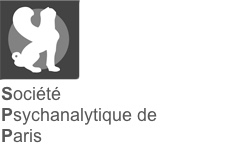|
Résumé :
|
The article offers an intellectual reconstruction of Otto Isakower’s concept of the ‘analyzing instrument’, the vehicle by which the analyst’s mind becomes joined to the patient’s, each in a comparable state of regressed self-observation. This view of technique is shown to have grown out of Isakower’s pre-war research (shaped by the work of Paul Schilder and Paul Federn) on a variety of pre-dormescent hallucination that still bears his name, ‘the Isakower phenomenon’. Primarily, however, it is Isakower’s amateur, apparently peripheral interest in the history and epistemology of science which was, the article argues, central to the evolution of his ideas. In particular, Isakower’s study of the scientific practices of self-observation and self-experimentation used by the nineteenth-century sensory physiologist Johannes Müller is shown to have been a decisive relay point between his earlier clinical research on hypnagogic states and his later reflections on technique. In underscoring the significance of that study, the article suggests that something of the transitional character of Müller’s scientific practices - his location on the threshold between Romantic and modern, positivist styles of investigating the senses - is retained in Isakower’s fascinating model of the analytic situation.
|




